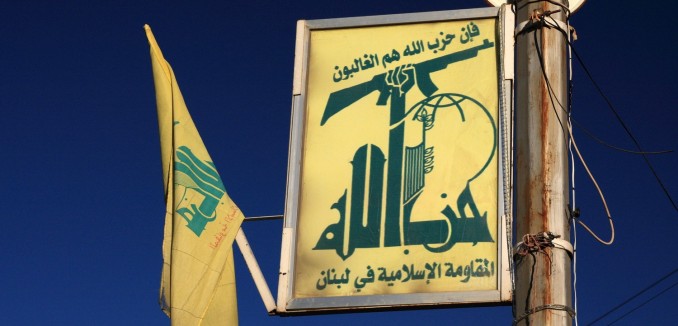A decade after fighting the Second Lebanon War against the Islamist terror militia Hezbollah, Israel is once again facing a build-up on its northern border, with the prospect of fresh hostilities looming.
The 2006 conflict, waged over a month during the hot summer, was the culmination of six years of rocket attacks by Hezbollah on cities and towns in northern Israel. By the time that war broke out, Hezbollah had taken advantage of Israel’s withdrawal from southern Lebanon in 2000 to assemble 15,000 fighters and thousands of missiles aimed in the direction of the Jewish state.
On July 12, 2006, Hezbollah terrorists infiltrated Israel off the back of a deadly mortar shell and rocket assault on the northern town of Shlomi. An IDF patrol on the Israeli side of the border was ambushed by the infiltrators, who killed three soldiers and abducted two. For almost two weeks after that outrage, Israel restricted its response to air attacks and artillery fire against Hezbollah positions. But Hezbollah’s refusal to return the kidnapped soldiers and adhere to a cease-fire resulted in an Israeli ground invasion.
The war officially ended on Aug. 14, though the two kidnapped soldiers, Ehud Goldwasser and Eldad Regev, were not returned until two years later, in coffins, following their murder by Hezbollah. The cessation of hostilities was rooted in U.N. Security Council Resolution 1701, which called for the complete disarmament of all armed groups in Lebanon and for full authority to be restored to the state. It also called for the removal of foreign forces from Lebanon; the bodies of several Iranian Revolutionary Guards were reported to be among the hundreds of Hezbollah fighters killed by the IDF.
Ten years on from the trauma and devastation visited upon Israeli and Lebanese civilians alike, Hezbollah is stronger than ever in southern Lebanon, and still faithful to its tactic of embedding itself within the civilian population—a war crime that Hamas in Gaza is also guilty of. Far from disbanding, as mandated by the U.N. Security Council, Hezbollah fighters have been refining their battlefield skills in the defense of Bashar al-Assad’s dictatorship in neighboring Syria.
This last point is worth dwelling on, because it illustrates the comprehensive transformation of the Middle East’s security environment since the 2006 war. The hope of democratic change ushered in by the mass protests against the Islamist regime in Iran in 2009 was quickly expunged by Tehran’s brutal response. Similar civil society uprisings across the region resulted in extraordinary scenes of brutality. But nothing has come close to Syria, which collapsed into civil war in 2011, with more than half of its population losing their homes and up to 400,000 killed.
The cost of the Syrian war upon Lebanon has been merciless. The Lebanese population of 4.5 million has now been joined by a staggering 1.5 million Syrians. Alongside this humanitarian crisis is a political one. Lebanon has not had a president since the stalemate election of 2014, a dire situation fully exploited by Hezbollah, which has never respected Lebanon’s sovereignty and which regards the republic as little more than a staging post for its attacks on Israel.
The stakes of another war involving Israel, then, are frighteningly higher this time around. A war in Lebanon at the same time as the slaughter continues in Syria — where the presence of the Iranians, the Russians, and the barbarians of Islamic State all represent distinct and deadly threats — risks evolving into a wider conflict.
Of immediate concern to the Israelis is Hezbollah’s military build-up in southern Lebanon. Hezbollah has moved most of its military hardware into the Shi’a villages of southern Lebanon, deliberately transforming thousands of innocent civilians into human shields. Indeed, some sense of the scale of a future Lebanese conflict can be gleaned from the fact that Hezbollah now possesses 130,000 missiles—10 times what it had in 2006, and more than every NATO country with the exception of the United States.
As unmistakeable a signal of intent as Hezbollah’s arsenal is, another war is not inevitable. The international leader with the most leverage in this situation is not U.S. President Barack Obama, who has effectively abandoned Syria and Lebanon, but Russian dictator President Vladimir Putin, who together with the Iranians has propped up Assad, and dispatched air and ground forces to assist his bloody regime.
Putin has met Israeli Prime Minister Benjamin Netanyahu four times in the last year, and the Hezbollah threat was a key topic of their conversations. The Russians clearly do not object to occasional Israeli bombing raids on Hezbollah convoys traveling towards the Golan Heights, but their response to a full-scale war might not be so indulgent.
Still, rather than risk a conflict with Netanyahu, who has made Israel’s objection to Hezbollah weapons transfers through Syria abundantly clear in their meetings, Putin has an opportunity to show himself as a peacemaker of sorts. The price of securing the survival of Assad, he can tell the Iranian and Hezbollah allies of the Syrian dictator, is that Israel’s borders cannot be breached.
The question is whether, and for how long, such a Pax Russiana could be sustained. Israel is rightly preparing for the worst case option, with IDF Chief of Staff Lt. Gen. Gadi Eizenkot warning that “Israel will use all of our power to destroy Hezbollah militarily.” Ten years after the pronouncements of Resolution 1701 came to naught, that, regrettably, may be the only way of disarming them for good.
Ben Cohen is a Senior Editor at The Tower Magazine and the Director of Partnership Programs at The Israel Project. Publications he has written for include Commentary, The Wall Street Journal, Ha’aretz and Tablet. He writes a weekly column for JNS.org, a news agency serving the Jewish media. Follow him on Twitter @BenCohenOpinion.
[Photo: yeowatzup / Wikimedia ]




